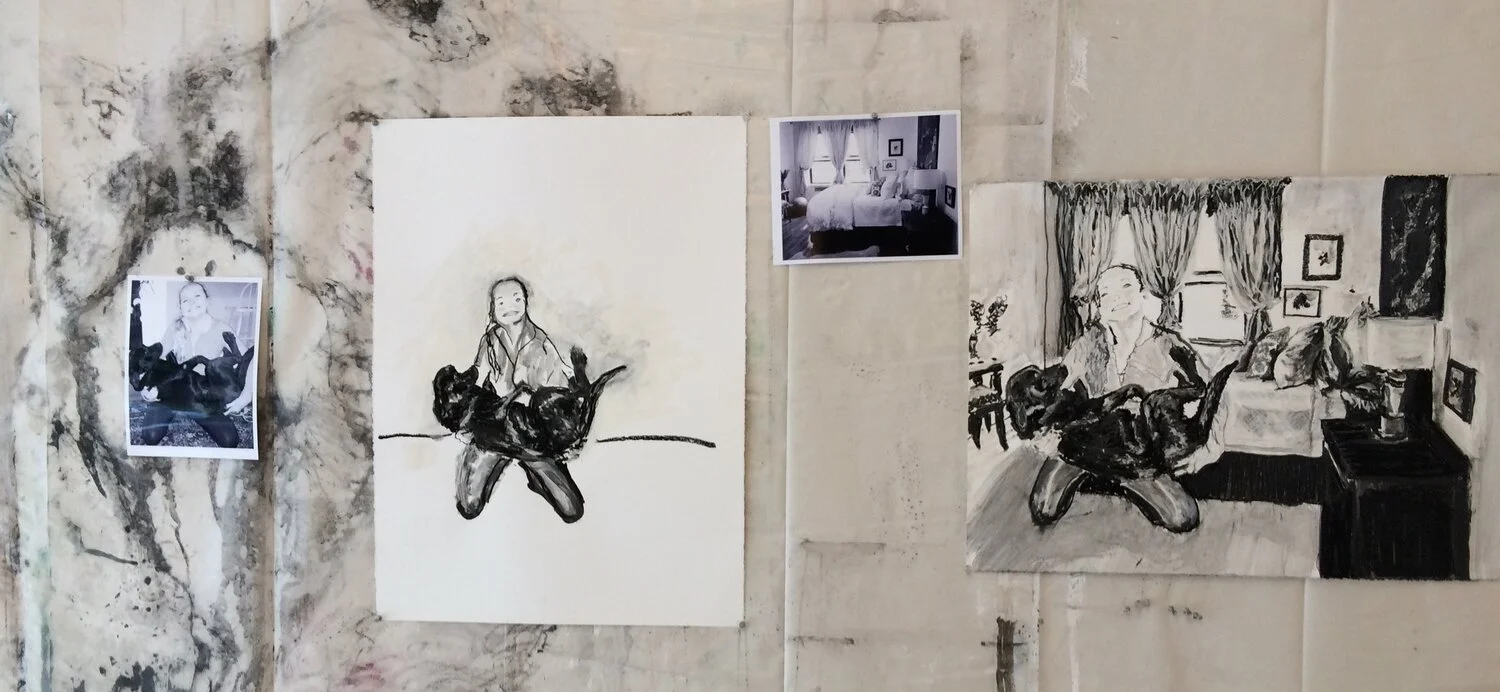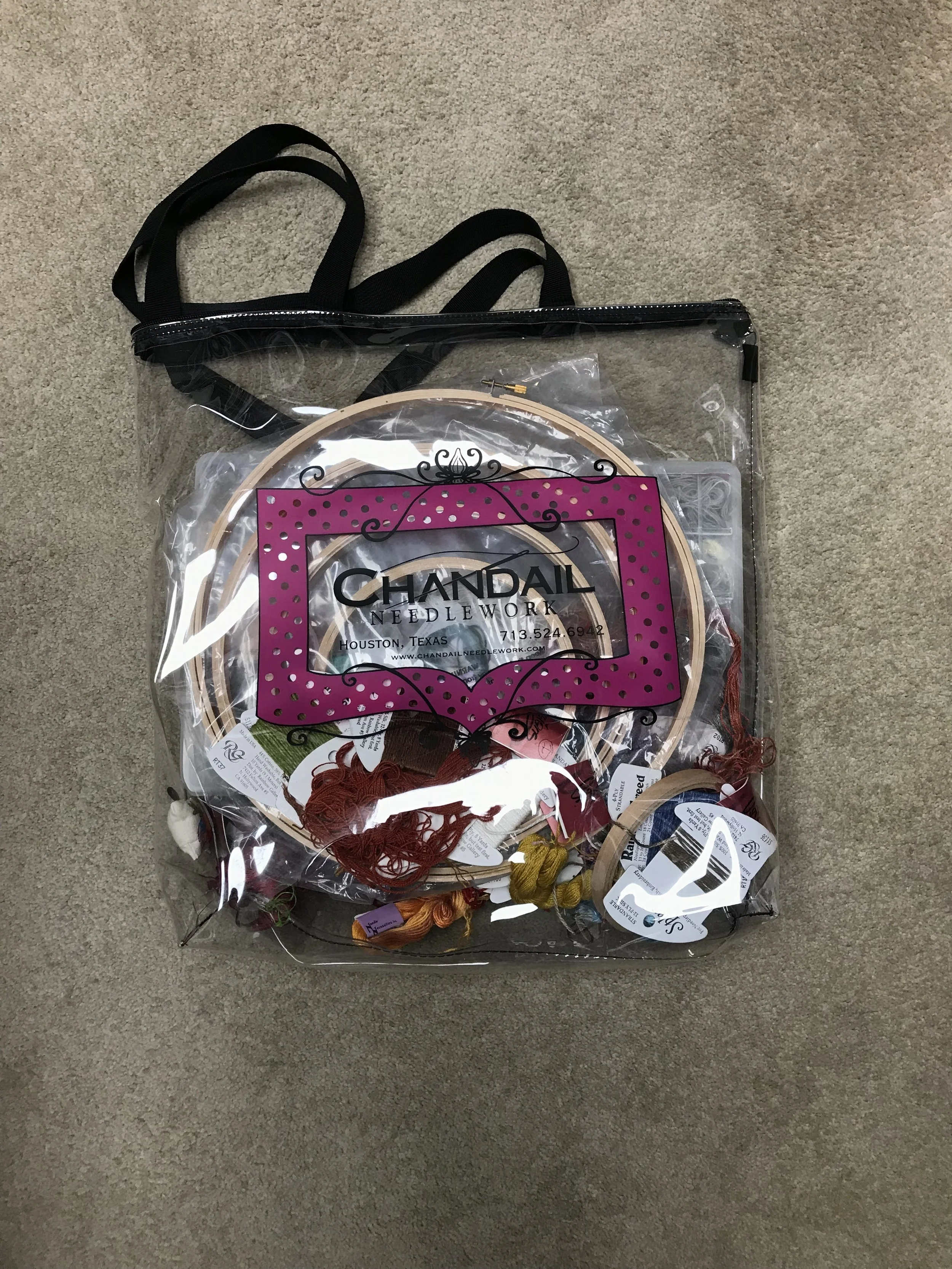I am bad (or maybe it is a good thing) about hyper focusing on a subject. The subject of the moment is the plight of the bumble bee amidst the use of man made chemicals. Taking a break from my studio and catching up with my dearest friends. We had a beach based sewing 🐝.
Knowing my friends would not enjoy a beach weekend of me hyper focusing and preaching to them about how we need to do what we can to protect the bees intestinal flora from glysophate a sewing bee was a super fun solution. We stitched and caught up for hours on end breaking only to play canasta and sip a beverage or two. I see these ladies only once a year so there is a lot to catch up on. My friends are all super supportive of my art and they are up on the latest problems for the bees intestinal flora.
I provided pashmina scarves (in everyone’s favorite colors) and coordinating threads. We stitched cactus and bees that pollinate them. We are all from El Paso so cactus was a natural for us.
Bag to keep our work in, (we all have bags from years past) embroidery thread, a few ball point sewing needles, tiny scissors, pencil or disappearing ink pen, embroidery hoops, and images of bees and cactus.
We were getting away from the pressures of everyday life so the idea was stitch like nobody is watching, no judging. No stitch is a bad stitch, and the beauty is in the imperfections. No one wants a scarf that looks machine made.
Below are images of my pashmina bee/cactus scarf as the work progressed. I will let my friends post their own work and hopefully spread a little 🐝♥️ to their other friends.
saguaro cactus
Prickly pear cactus
ocotillo cactus
yucca cactus
mark making with thread
barrel cactus
this guy ended up rather large.
scarf w stitching
finished? I am not sure but the trip is.
Looking at this photo I must give a tip for wearing a scarf and taking photos- pull scarf up around your neck - 🤪 aging is 👎🏻 On your neck but it comes with knowledge and that is 👍.
If anyone would like to host a sewing bee and talk about ways to save the bees give me a shout. I am happy to send you images of bees to stitch and help out in anyway I can.

























































